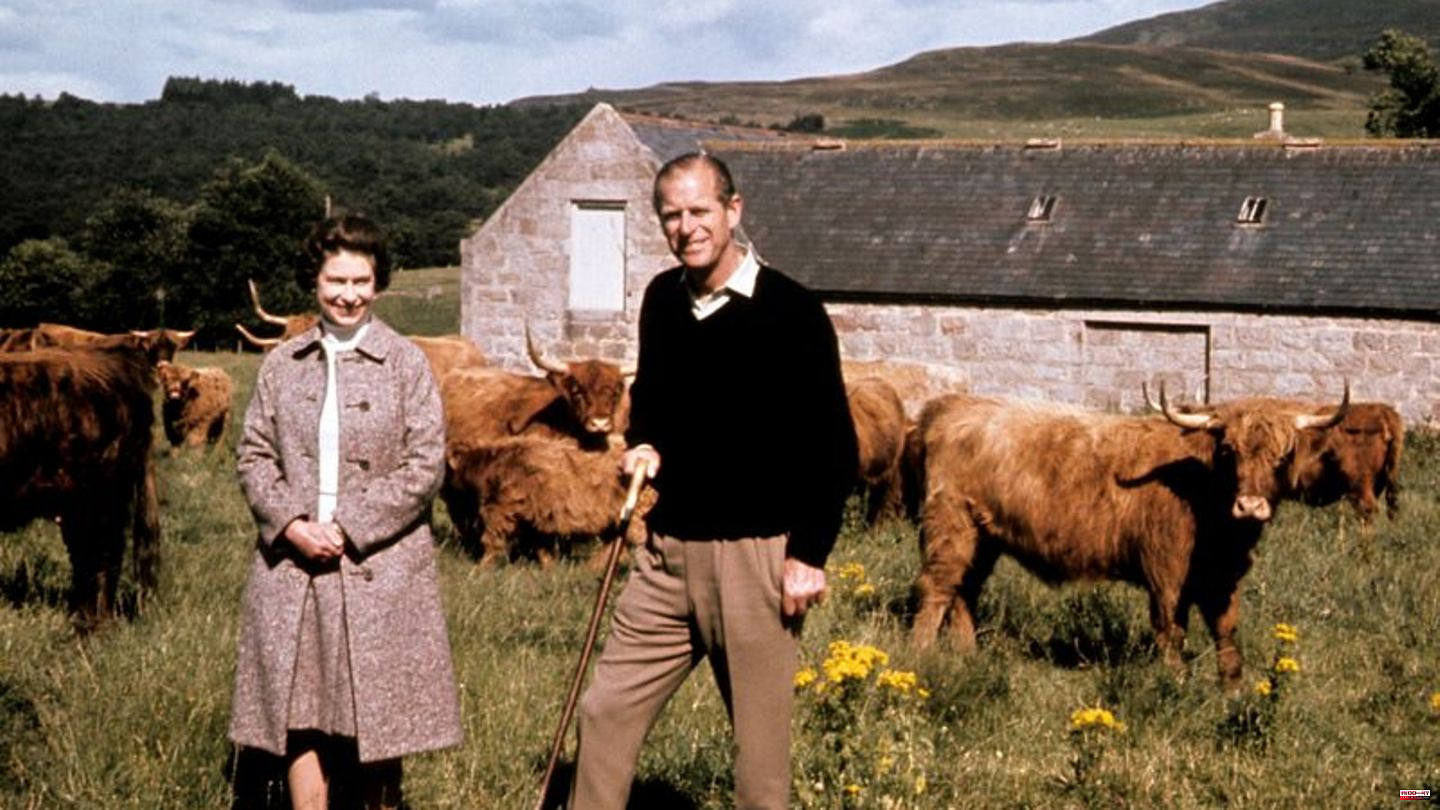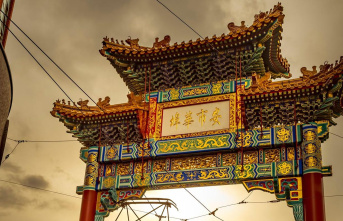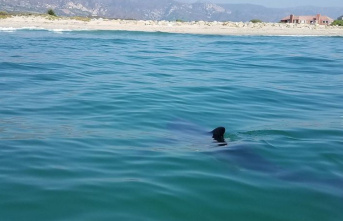When John Burleigh was eight, his mother took him to Edinburgh to see the young Queen Elizabeth. "She glided past me in a black sedan and I waved to her. She waved too." Ever since then he had felt that there was a special bond between the two of them.
So there is no question for him that he will be back in Edinburgh this Monday, now 69 years old. He has traveled from near Glasgow with his wife Heather to pay their last respects to the Queen. In a tartan kilt he stands in front of St. Giles Cathedral and waits for the procession with the coffin.
Thousands of Scots have been waiting in front of the barriers on the Royal Mile since early morning. This Royal Mile looks very different from The Mall in London, the bombastic boulevard that will be decked out with giant Union Jacks for next week's Queen's State Funeral. The Royal Mile is relatively narrow, winding through Edinburgh's medieval Old Town.
A more intimate relationship
When the procession with the coffin stomps and jerks over the cobblestones, led by King Charles III, then you are there very closely. And that's significant, because the relationship between the Scots and the Queen has always been a little more intimate.
Elizabeth II was an English queen, born in London, the city from which countless campaigns of conquest and punitive expeditions against Scotland have been planned since the Middle Ages. At the beginning of Elizabeth's tenure, Scottish nationalists repeatedly daubed or damaged red mailboxes that said "ERII" (Elizabeth Regina II): In Scotland, her name should actually have been Elizabeth I, since the country was at the time of the English Tudor Queen Elizabeth I still had her own queen in the 16th century - the legendary Mary Stuart.
Such incidents are unthinkable today. It is well known that a large proportion of Scots are aiming to leave the United Kingdom, and according to a survey published in May only a minority of 45 percent want to keep the monarchy - but that is not directed against the Queen. She was also loved here in the north.
However, the Scots had a different view of Elizabeth than the English, and it showed again this Monday in Edinburgh. Unlike London, which now has a huge black-bordered picture of her on every corner and in almost every shop window, there are few displays of mourning on display in the Scottish capital. Even when the Scots talk about Elizabeth, the tone is different.
"Not only queen, but also neighbor"
It lacks the pathetic, also submissive, which is typical of the television programs produced in London. Scots speak of the Queen as if they were a lovely old friend. "Not only queen, but also neighbor" is a frequently used phrase up here.
If the Queen has been a private woman anywhere, it's in Scotland. Elizabeth spent her summer vacations at Balmoral, the castle that Queen Victoria once bought at the insistence of her husband Albert, because the surrounding area with its deep forests reminded him of his German homeland. Her definition of summer was idiosyncratic: the old lady's visit usually began at the end of July and lasted until October. Ten weeks Scotland. It was as if she was reluctant to return from the solitude of the Highlands to the noisy metropolis of London.
Encounters with the Queen
In Scotland there are countless stories of hikers who have met the Queen over the years in the wild and romantic nature and chatted with her for a long time without recognizing her. She once even took a photo of two Americans at their request - so she wasn't in the picture herself.
"She was such a lady, so dignified," enthuses Glasgow native Eirlys, who has settled into a folding chair on the Royal Mile. Her companions Amy, Rebecca and Fiona have snuggled up in thick blankets. Denis Melvin from Wales, dressed in a black tie and Union Jack shoes, is waiting with his two dogs on the ground directly in front of the barrier.
Overall, the mood has more of a folk festival than national mourning. There's a certain melancholy in the air, but at the same time you're happy to be there. And then she has simply reached a blessed age.
There tends to be more older people than younger people here. 22-year-old Mark Green is currently studying in Cologne, but on this day he is back in Edinburgh - he was in Scotland visiting family anyway. "I would say the Queen's death wasn't as devastating to me as it was to some of our older family members," he said. "But I also know what it means that the Queen has just died here in Scotland and I'm grateful to be able to pay her last respects in my home country."
Set of a historical drama
A radio presenter finds the situation "surreal" and says it's like being in a movie. It really looks like a historical drama set here. For the last time, the Queen will pass the famous sights of the Old Town: the golden handprints that the author J.K. Rowling immortalized in the pavement - she wrote all seven Harry Potter novels here. At the "Edinburgh Vaults", a vaulted labyrinth that is considered "Britain's most haunted place" (BBC). And also at the souvenir shops, which offer tartan clothing in a "Princess Diana memorial" look - whatever that may be.
The Queen's last recorded small talk, in conversation with a photographer last Tuesday, was about the Scottish weather. It was bad as usual. But now the sky has suddenly opened up and all the spiers of Edinburgh are sparkling in the golden autumn light. John Burleigh is expected to queue late into the night to be able to walk past the Queen's coffin at the cathedral and bid her farewell. "I'll see them laid out," he says, gazing far away toward the Firth of Forth, which can be seen from the Royal Mile. "She was a wonderful lady," he says. "A role model for all of us."












